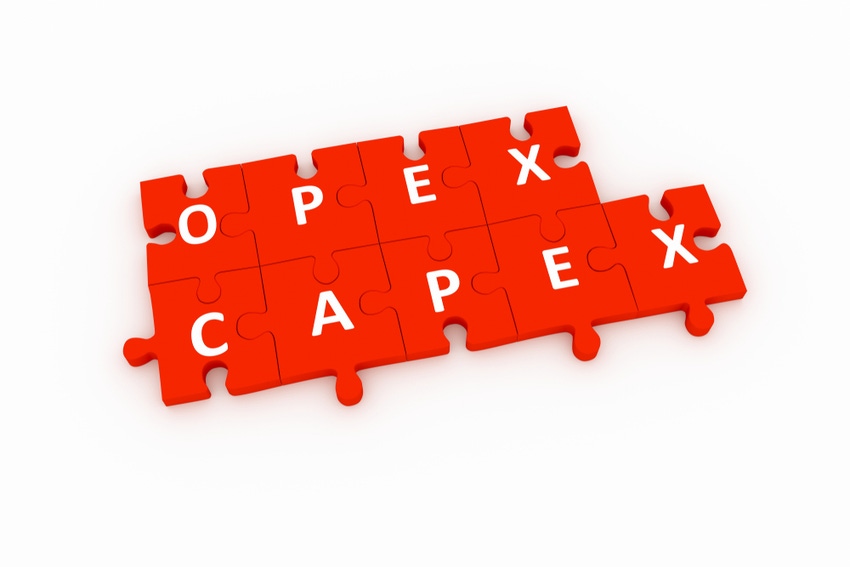By avoiding capex during stressful times, companies can fight to stay in business post-COVID-19.
May 28, 2020

The economic challenges of the COVID-19 pandemic could give new life to the opex payment model for improving IT infrastructure.
That’s the view of Juan Orlandini, chief architect of cloud and data center transformation for systems integrator Insight. An operational expenditure (opex) is a day-to-day cost of running a system or business. That compares to a capital expenditure (capex), which covers longer-term major purchases in facilities, physical services, goods and more.

Insight’s Juan Orlandini
“Opex models were interesting prior to COVID-19, but they’ve become part of every conversation today,” Orlandini told Channel Partners. “The missions of clients are not changing, just the financial realities around their decision-making.”
Businesses are re-evaluating these options during the pandemic as they look for the most prudent ways to pay for them. For many companies, it becomes a balance between saving cash or putting off capex purchases entirely for now, said Orlandini.
And that’s where an opex payment model is useful, because rather than committing money long-term, companies pay as they go. That can at least allow them to continue needed projects despite the economic crisis caused by COVID-19, he said. Capital expenditures tie up money for a longer period of time. Prime projects for opex options include compute and storage, which can have a wide range of capacity requirements over time.
Some clients have multiple projects to complete now, but they have some tough choices to make, said Orlandini.
“COVID-19 is making them evaluate whether they should shift to opex,” said Orlandini. “For some companies, where cash preservation is No. 1, then this absolutely makes sense.”
But some clients don’t want to make the switch because it might negatively impact how they report their profit.
“Every client will have to deal with evaluating that on their own,” he said. “A good way to think about it is that if cash pressures are of high importance right now, then maybe you’re just trying to make it to the other side of the COVID-19 pandemic. If you’re not careful, it doesn’t matter what happens at the other end if you don’t make it past COVID-19.”
For economically healthy companies with bigger cash reserves, they might continue to operate with capex models, said Orlandini.
“But it’s not an answer for everybody,” he said.
Not Your Grandfather’s Opex
Also consider that today’s opex options are different from former opex options, said Orlandini.
“In the past, many manufacturing partners that made hardware and software offered you a capex purchase model or a leasing model that was presented as an opex model. But those models only allowed you to get more services if needed. Their models did not offer a way to flex down on storage or whatever. Today’s new opex models let you use more or less capacity as your needs change.”
For customers, that’s a huge benefit and a cost savings compared to paying for unused capacity, he said. That can provide enough for service spikes and can be negotiated with vendors.
But while an opex payment model reduces immediate spending, it can cost more than buying services on a capex basis.
“These opex models can come at a premium,” he said. “You can’t get anything for free. It’s the same with cloud. If you buy storage in drips or drabs, you’re being charged more than if you are buying a larger capacity. That’s part of the math you’ve got to do.”
For companies that really need to preserve cash, however, opex can prove to be a viable short-term option, said Orlandini.
“You may need that to get through this bad time,” he added.
The coronavirus and its economic and business pressures are affecting various industries differently, said Orlandini. At the same time, projects that might have been on back burners months ago may now take center stage. That includes digital transformation efforts, which many companies are accelerating to allow employees to work from home and keep their businesses running.
“We’re all adapting to a new model,” said Orlandini. “We want to be able to digitally react with everyone, from buying groceries to cars to everything. Companies that wanted to do this previously are now really motivated.”
Orlandini said CEOs are telling him these kinds of realignments will continue as long as they are needed.
“That’s what shows you these projects have now changed in importance for a lot of people. So, it may make sense to complete them using an opex model, if needed.”
Read more about:
AgentsAbout the Author(s)
You May Also Like


